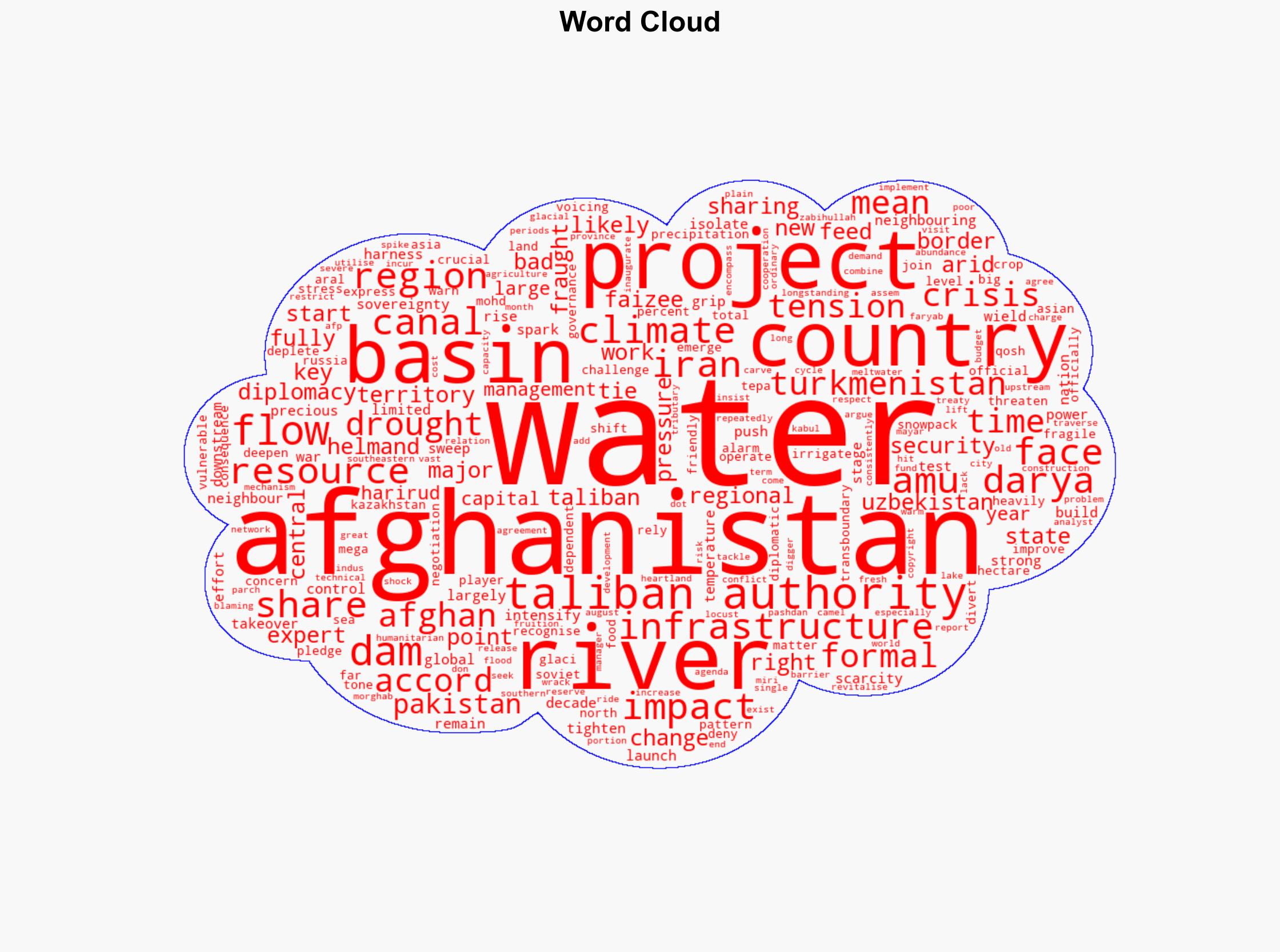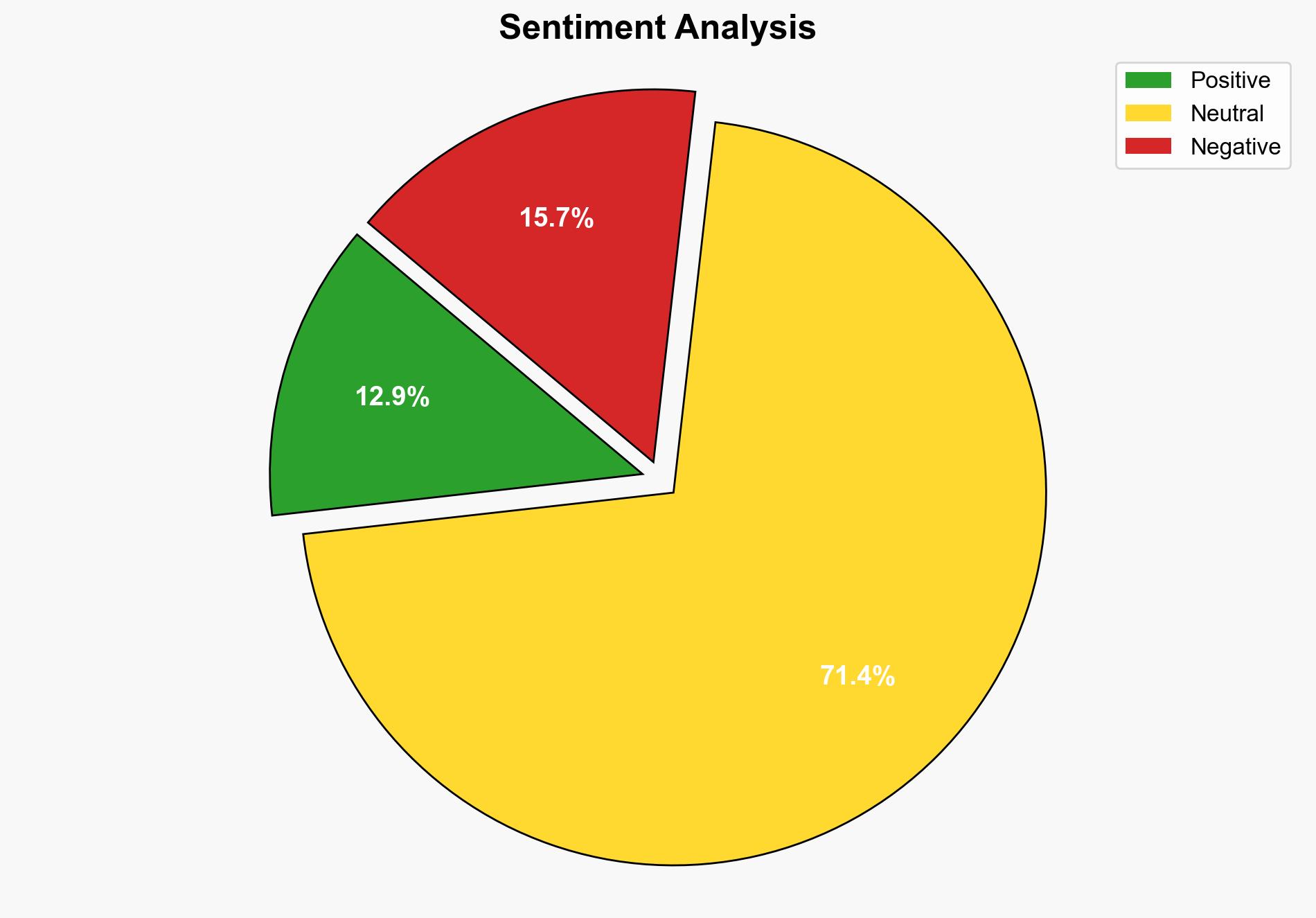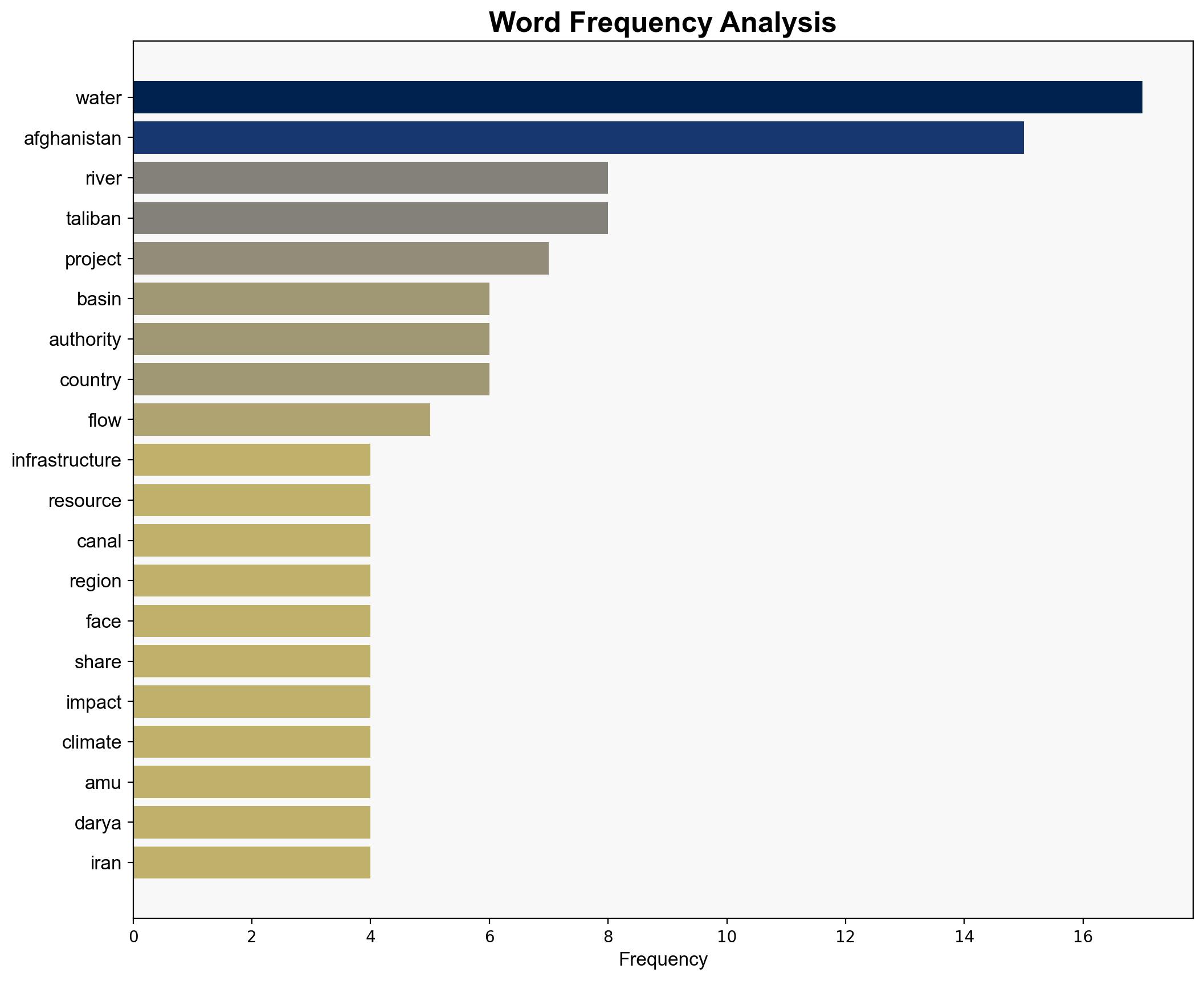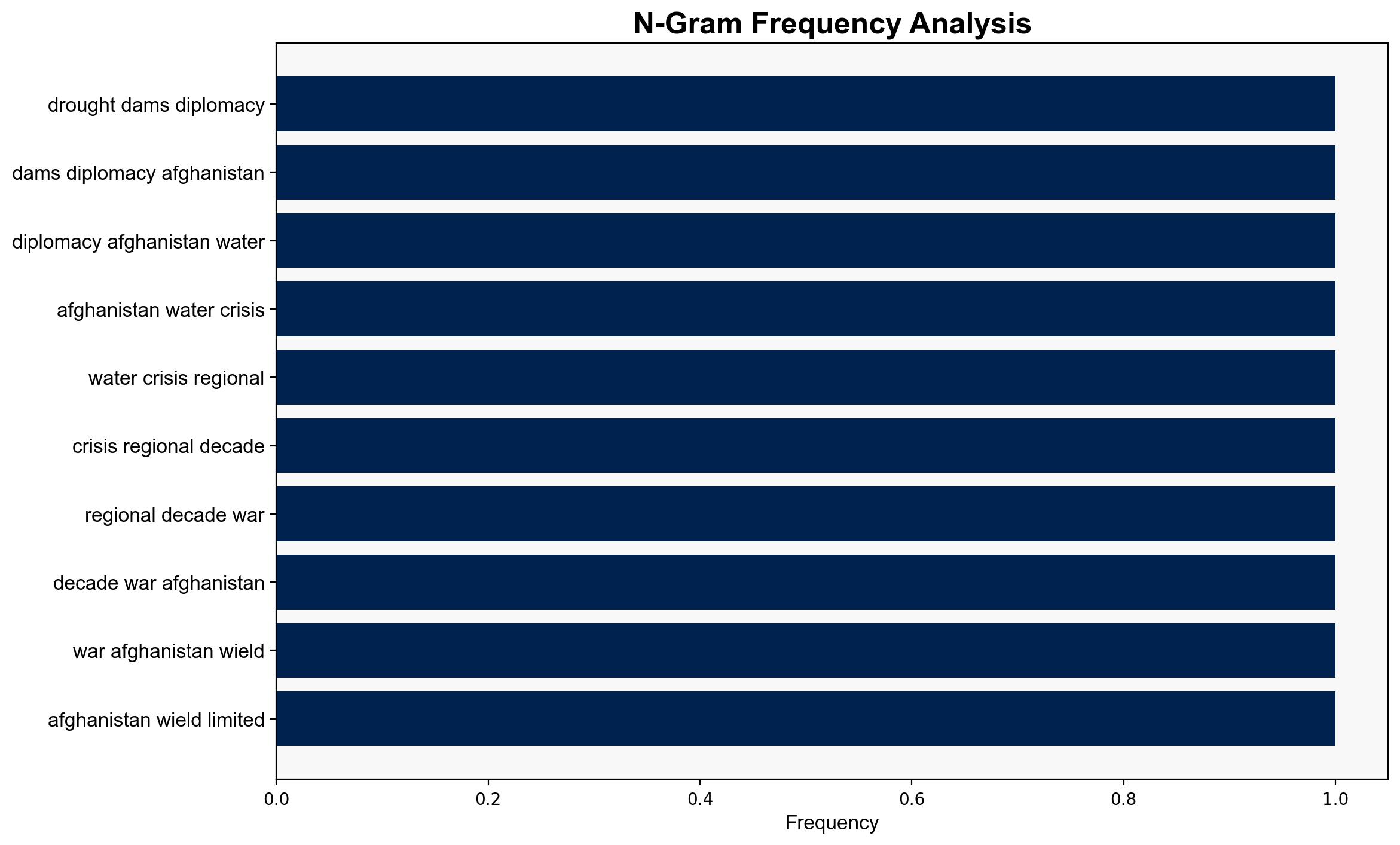Drought Dams And Diplomacy Afghanistan’s Water Crisis Goes Regional – International Business Times
Published on: 2025-08-17
Intelligence Report: Drought Dams And Diplomacy Afghanistan’s Water Crisis Goes Regional – International Business Times
1. BLUF (Bottom Line Up Front)
The most supported hypothesis is that Afghanistan’s water infrastructure projects, particularly the Qosh Tepa Canal, will exacerbate regional tensions and potentially destabilize Central Asia due to the significant diversion of water from the Amu Darya River. Confidence level: Moderate. Recommended action: Engage in multilateral diplomatic efforts to establish a comprehensive water-sharing agreement that includes all affected nations.
2. Competing Hypotheses
1. **Hypothesis A**: Afghanistan’s water infrastructure projects will lead to increased regional cooperation and the establishment of new water-sharing agreements, as countries recognize the mutual benefits of collaboration in the face of climate change.
2. **Hypothesis B**: Afghanistan’s projects will heighten regional tensions, particularly with Uzbekistan and Turkmenistan, leading to potential conflicts over water resources as these countries face significant water shortages.
Using ACH 2.0, Hypothesis B is better supported due to historical tensions over water resources, the lack of existing formal agreements, and the significant impact of the Qosh Tepa Canal on downstream water availability.
3. Key Assumptions and Red Flags
– **Assumptions**: It is assumed that Afghanistan can complete its water projects without significant external interference or internal disruption. It is also assumed that downstream countries will not take aggressive actions to counter the water diversion.
– **Red Flags**: The absence of formal water-sharing treaties and the Taliban’s limited international recognition could hinder diplomatic resolutions. Additionally, the potential for misinformation or underestimation of the canal’s impact by Afghan officials is a concern.
4. Implications and Strategic Risks
– **Geopolitical**: Increased tensions could lead to diplomatic standoffs or even military posturing by affected countries.
– **Economic**: Water scarcity could impact agricultural productivity, exacerbating food insecurity and economic instability in the region.
– **Environmental**: Over-extraction of water resources could lead to ecological degradation, affecting biodiversity and further reducing water availability.
5. Recommendations and Outlook
- Facilitate regional dialogues involving Afghanistan, Uzbekistan, Turkmenistan, and other stakeholders to develop a comprehensive water-sharing framework.
- Encourage international organizations to mediate and provide technical support for sustainable water management practices.
- Scenario-based projections:
- Best: Successful multilateral agreements lead to improved regional stability and sustainable water management.
- Worst: Escalating tensions result in conflict and significant economic and humanitarian crises.
- Most Likely: Continued diplomatic efforts with intermittent tensions and slow progress towards formal agreements.
6. Key Individuals and Entities
– Mohd Faizee: Water governance expert warning of the canal’s consequences.
– Zabihullah Miri: Project manager involved in the canal construction.
7. Thematic Tags
national security threats, regional focus, water resource management, climate change impact




